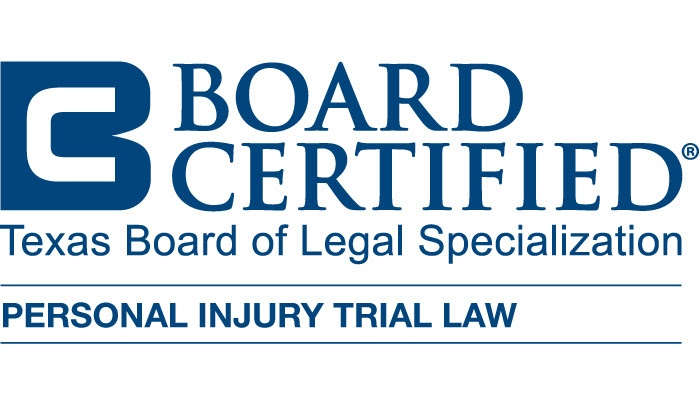When a loved one passes away due to someone else’s actions or inaction, the grief and confusion that follow can be overwhelming. While no legal action can ever fully compensate for the loss of a loved one, wrongful death cases offer a means to seek justice and hold responsible parties accountable. In Texas, one of the key elements that must be established in a wrongful death case is negligence. Understanding how negligence is determined in these cases is crucial for families seeking justice. This page will delve into the various aspects of negligence in Texas wrongful death cases, explaining the legal principles and processes involved.


Understanding Negligence in Texas
Negligence is a legal concept that plays a central role in wrongful death cases. It refers to the failure to act with the level of care that a reasonable person would have exercised under similar circumstances. In Texas, to establish negligence in a wrongful death case, the plaintiff must prove that the defendant owed a duty of care to the deceased, breached that duty, and that the breach directly caused the death. This process is complex and involves various factors that need to be carefully examined.
The first step in proving negligence is establishing that the defendant owed a duty of care to the deceased. This means showing that the defendant was legally obligated to act in a certain way to prevent harm to the deceased. For example, in a medical malpractice case, a doctor owes a duty of care to their patient. In a car accident case, drivers owe a duty of care to others on the road. The specific nature of the duty of care depends on the relationship between the defendant and the deceased and the circumstances surrounding the incident.
Once a duty of care is established, the next step is to demonstrate that the defendant breached this duty. A breach occurs when the defendant fails to act with the level of care that a reasonable person would have exercised in similar circumstances. For instance, if a driver was texting while driving and caused an accident that led to a fatality, this could be considered a breach of duty. Similarly, if a property owner fails to repair a known hazard on their property, leading to a fatal accident, this could also constitute a breach of duty.
The third element in proving negligence is causation. This means that the plaintiff must show that the defendant’s breach of duty directly caused the death of their loved one. In legal terms, this is often referred to as “proximate cause.” It requires establishing a direct link between the defendant’s actions (or inaction) and the death. This can sometimes be challenging, especially in cases where multiple factors may have contributed to the death. However, it is a crucial element in any wrongful death case.
My focus is to give a voice to families who have suffered a wrongful death or a serious injury to a family member caused by an 18-Wheeler, commercial truck, or a drunk driver. Contact us today, we can help you.Helping Injury Victims for Over 25 Years
The Role of Evidence in Proving Negligence
In Texas wrongful death cases, evidence plays a critical role in proving negligence. The burden of proof rests on the plaintiff, meaning they must present enough evidence to convince the court that the defendant was negligent. This evidence can take many forms, including witness testimony, expert opinions, medical records, accident reports, and more. Each piece of evidence must be carefully collected, preserved, and presented to support the plaintiff’s claims.
One of the most common types of evidence used in wrongful death cases is witness testimony. Witnesses who saw the incident or have knowledge of the circumstances leading up to the death can provide valuable insights into what happened. Their testimony can help establish key facts, such as whether the defendant was acting recklessly or negligently at the time of the incident.
In addition to witness testimony, expert opinions can also be crucial in proving negligence. Experts in various fields, such as medical professionals, accident reconstructionists, or engineers, can provide detailed analyses of the incident and offer their professional opinions on whether the defendant’s actions were negligent. Their testimony can help clarify complex issues and provide the court with a deeper understanding of the case.
Medical records and accident reports are also important pieces of evidence in wrongful death cases. These documents can provide detailed information about the cause of death and the circumstances surrounding the incident. For example, an autopsy report may reveal that the deceased suffered injuries consistent with a particular type of accident, supporting the plaintiff’s claim that the defendant’s actions caused the death.
Comparative Negligence in Texas
Texas follows a legal doctrine known as “comparative negligence” or “proportionate responsibility” in wrongful death cases. This means that if the deceased was partially responsible for the incident that led to their death, the amount of compensation awarded to the plaintiff may be reduced. In other words, the court will assign a percentage of fault to each party involved in the incident, including the deceased. The plaintiff’s compensation will then be reduced by the deceased’s percentage of fault.
For example, if the court determines that the deceased was 30% responsible for the accident that caused their death and the defendant was 70% responsible, the plaintiff’s compensation would be reduced by 30%. This doctrine is intended to ensure that compensation is fair and proportional to each party’s level of responsibility. However, if the deceased is found to be more than 50% responsible for the incident, the plaintiff may be barred from recovering any compensation at all.
The concept of comparative negligence highlights the importance of presenting a strong case in wrongful death claims. Plaintiffs must work to minimize the percentage of fault assigned to the deceased by presenting compelling evidence that the defendant was primarily responsible for the incident. This can be a challenging task, especially in cases where the facts are complex or disputed. However, it is a crucial part of the legal process in Texas wrongful death cases.
Related Videos
Choosing a Personal Injury Attorney
Types of Compensation in a Truck Accident Claim
Damages in Texas Wrongful Death Cases
If negligence is successfully proven in a Texas wrongful death case, the plaintiff may be entitled to various types of damages. These damages are intended to compensate the family for the losses they have suffered as a result of their loved one’s death. In Texas, wrongful death damages can include compensation for both economic and non-economic losses.
Economic damages are those that have a specific monetary value. They may include medical expenses incurred prior to the deceased’s death, funeral and burial costs, lost wages and benefits that the deceased would have earned had they lived, and other financial losses. These damages are intended to alleviate the financial burden on the family and help them move forward after their loss.
Non-economic damages, on the other hand, are more difficult to quantify. They include compensation for the emotional and psychological impact of the death, such as pain and suffering, loss of companionship, and loss of consortium. These damages are intended to address the non-financial aspects of the family’s loss, acknowledging the deep emotional toll that a wrongful death can have.
In some cases, Texas courts may also award punitive damages in wrongful death cases. Punitive damages are intended to punish the defendant for particularly egregious or reckless behavior and to deter others from engaging in similar conduct. These damages are not intended to compensate the family for their losses, but rather to send a message that certain types of behavior will not be tolerated.
The Importance of Legal Representation
Navigating a wrongful death case in Texas can be a complex and emotionally challenging process. The legal principles involved are intricate, and the stakes are high for families seeking justice for their loved ones. For this reason, it is crucial for plaintiffs to seek legal representation from an experienced law firm that understands the nuances of Texas wrongful death law.
An experienced law firm can provide the guidance and support needed to build a strong case and maximize the chances of a successful outcome. This includes gathering and presenting evidence, negotiating with insurance companies, and representing the plaintiff’s interests in court. Legal representation is especially important in cases where the defendant is likely to contest the claim or where multiple parties are involved.
In addition to providing legal representation, a law firm can also offer emotional support to families during this difficult time. The loss of a loved one is a deeply traumatic experience, and the legal process can add to the stress and confusion. Having a compassionate and knowledgeable legal team on your side can make a significant difference in how the case is handled and how the family is able to cope with their loss.
Seeking Justice for Your Loved One
If you have lost a loved one due to someone else’s negligence, it is important to understand your legal rights and options. While no amount of compensation can ever replace the person you have lost, a successful wrongful death claim can provide the financial support you need to move forward and help prevent similar tragedies from happening to others. Taking legal action can also provide a sense of closure and justice, knowing that those responsible for your loved one’s death have been held accountable.
At Willumsen Law Firm, P.C., we understand the profound impact that a wrongful death can have on a family. Our dedicated legal team is committed to providing compassionate and effective representation for families seeking justice for their loved ones. We have the experience and knowledge needed to navigate the complexities of Texas wrongful death law and are here to support you every step of the way. If you are considering pursuing a wrongful death claim, we encourage you to contact us today to discuss your case and learn more about how we can help you during this difficult time.



